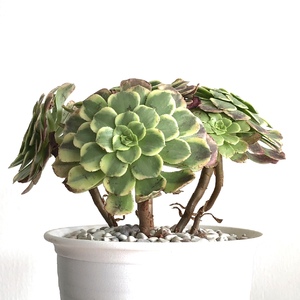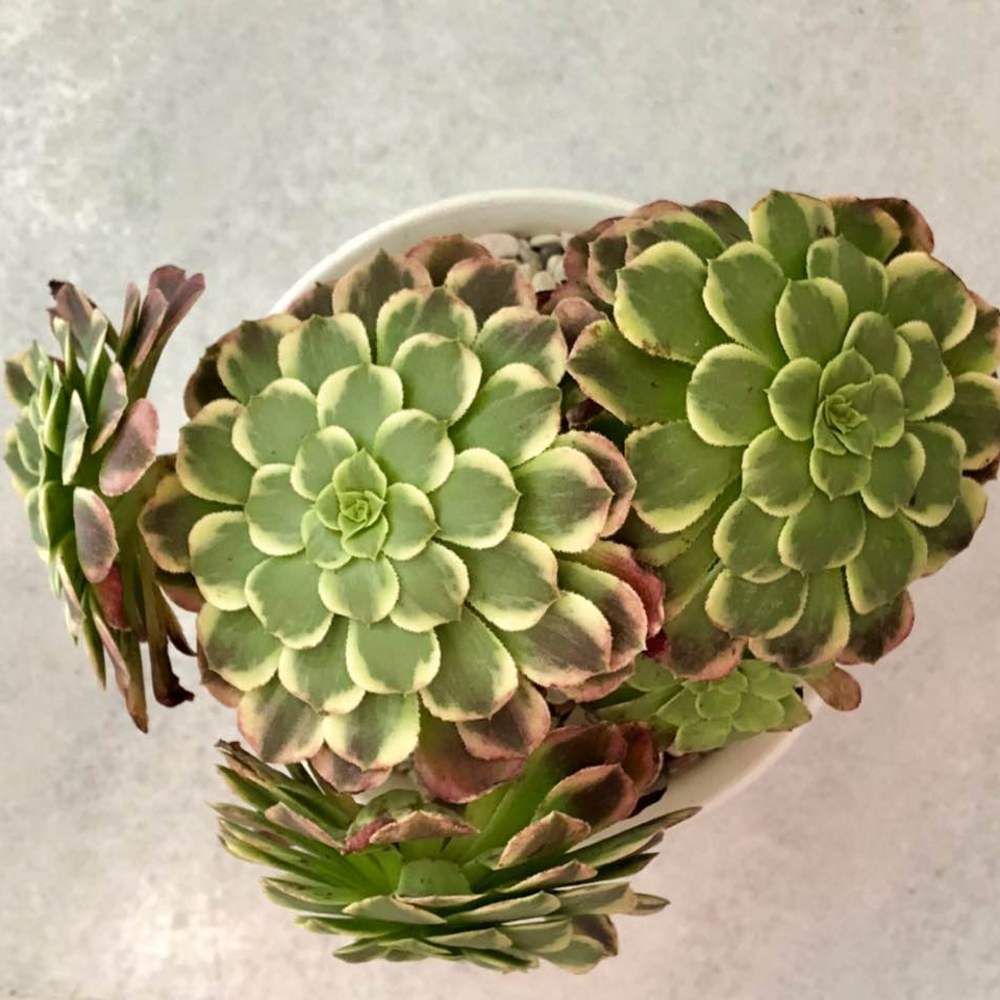植物经验
详细说明
What are aeoniums? These plants also have the fleshy leaved characteristic of succulents, where they store moisture. Unlike many other succulents, however, aeonium have shallow root systems and cannot be allowed to dry out completely. Only the top few inches of soil should be allowed to dry out when growing aeoniums. There are over 35 aeonium species, in a graduating range of sizes.
Consider growing aeoniums as part of a cactus or succulent display. They do well in shallow pots with a mixture of cactus soil and peat. You can combine them with other plants such as aloe, agave or jade plants. Place a thin layer of inorganic mulch such as ornamental rock around the plants and place in a sunny warm location. For outdoor use, place them along sunny borders or in rockeries. In temperate or cooler zones, frost may kill the foliage and the rosette will fall off. If the plant is mulched it will grow anew in spring.
Provide the plant with well-drained soil in a sunny location. They prefer temperatures between 40 and 100 F. (4-38 C.).
These succulents are very easy to grow from cuttings. You really just have to cut off a rosette and let the cut end dry out for a couple of days. Then set it in lightly moist peat moss. The piece will root quickly and produce a new plant.
Caring for Aeonium Plants
Aeonium care is remarkably easy. Plants in containers require more frequent watering than those in ground. Fertilize aeonium in containers once annually in spring when new growth commences. In-ground plants rarely need fertilizer, but may benefit from a light coating of mulch just around the base of the plant. Be careful not to pile it up around the stem or rot might set in.
The most common problems when caring for aeonium plants are root rot and insects. Root rot is prevented by using clay pots with good drainage or checking soil percolation prior to planting. Keep the roots moist but never soggy.
Good aeonium care also requires you to watch for pests. Mites and scale may attach the succulents. Combat these with horticultural soaps or neem oil. Be careful when using soap spays, however. Spraying too frequently can cause discoloration and lesions on the skin of the plant.
Consider growing aeoniums as part of a cactus or succulent display. They do well in shallow pots with a mixture of cactus soil and peat. You can combine them with other plants such as aloe, agave or jade plants. Place a thin layer of inorganic mulch such as ornamental rock around the plants and place in a sunny warm location. For outdoor use, place them along sunny borders or in rockeries. In temperate or cooler zones, frost may kill the foliage and the rosette will fall off. If the plant is mulched it will grow anew in spring.
Provide the plant with well-drained soil in a sunny location. They prefer temperatures between 40 and 100 F. (4-38 C.).
These succulents are very easy to grow from cuttings. You really just have to cut off a rosette and let the cut end dry out for a couple of days. Then set it in lightly moist peat moss. The piece will root quickly and produce a new plant.
Caring for Aeonium Plants
Aeonium care is remarkably easy. Plants in containers require more frequent watering than those in ground. Fertilize aeonium in containers once annually in spring when new growth commences. In-ground plants rarely need fertilizer, but may benefit from a light coating of mulch just around the base of the plant. Be careful not to pile it up around the stem or rot might set in.
The most common problems when caring for aeonium plants are root rot and insects. Root rot is prevented by using clay pots with good drainage or checking soil percolation prior to planting. Keep the roots moist but never soggy.
Good aeonium care also requires you to watch for pests. Mites and scale may attach the succulents. Combat these with horticultural soaps or neem oil. Be careful when using soap spays, however. Spraying too frequently can cause discoloration and lesions on the skin of the plant.
花相册 (2)


kensong
2018年09月08日

Aeonium Arboreum California


kensong
2018年09月08日

This is my first growing diary. Angella Succulents RM100.







